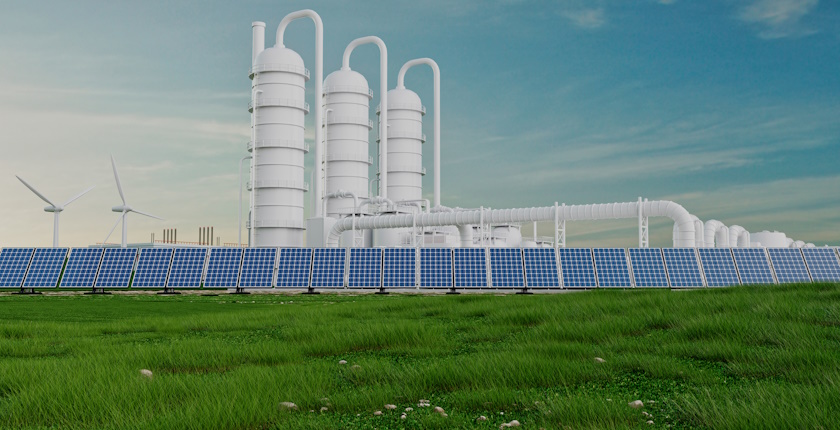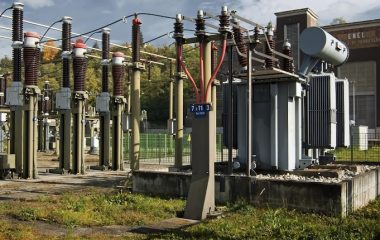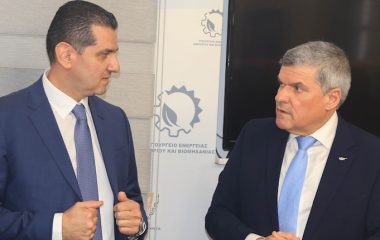
Photo: iStock
The Cypriot government is exploring the possibilities for hydrogen production as a complementary solution for the island state’s energy isolation. The draft strategy until 2030 envisages the first hydrogen buses and trucks.
With the increase in the share of renewable sources in the energy system in Cyprus and their intermittency, energy storage including hydrogen become indispensable, according to Minister of Energy, Commerce and Industry George Papanastasiou. “While advancing on energy storage, we are also simultaneously exploring our hydrogen capabilities as a complementary solution,” he stated, while also saying it’s not just a technical solution “but also a strategic asset” for the country’s energy security.
The ministry’s draft National Hydrogen Strategy is under public consultation until the end of the month. The document envisages pilot use in industrial production processes that require temperatures higher than 400 degrees Celsius as an alternative to petroleum products.
Where electrification of the transportation sector is difficult, hydrogen is proposed as a fuel for heavy vehicles, including buses and trucks, aiming to reduce pollutant emissions. The first such vehicles would be introduced by the end of the decade.
Green hydrogen production cost seen at EUR 2.62 to EUR 4.4 per kilogram in 2030
The strategy doesn’t provide much detail. The cement industry could supposedly cover up to 10% of its energy needs by 2030 from hydrogen, and expand to 50% by 2050. The ministry sees hydrogen potentially accounting for 4% of total energy consumption in road transportation for trucks and buses by 2030, rising to over 15% by 2050.
In the ambitious scenario, total investment cost is projected to reach EUR 2.4 billion by 2030 and EUR 6.75 billion by 2050. Specific investments through 2030 include EUR 161.5 million for hydrogen buses and trucks, EUR 41.2 million for hydrogen refueling stations and EUR 490.1 million for e-kerosene (ekerosene) production. The conservative scenario sees only minor steps forward by the end of the decade.
Curtailed renewable electricity alone isn’t enough for the feasibility of electrolyzers
The authors said the levelized cost of hydrogen (LCOH) production from renewable sources is currently EUR 5 to EUR 15 per kilogram. The level for off-grid electrolyzers in 2030 is expected at EUR 2.62 per kilogram, decreasing to EUR 1.42 by 2050. Conversely, if grid supply is the only power source, LCOH comes in at EUR 4.4 per kilogram in 2030 and EUR 2.9 in 2050, assuming an electricity cost of EUR 0.1 per kWh.
“The conservative scenario is presented as the most realistic approach in the medium term for Cyprus, as it better responds to the existing infrastructure and the real needs of the island’s energy system. By focusing on specialized uses where hydrogen offers unique advantages, the country can develop the sector gradually and sustainably, without overburdening its economic and natural resources,” the strategy adds.
No fossil gas infrastructure to upgrade
The document acknowledges key obstacles to the development of a green hydrogen economy. Water scarcity is a critical concern, as the production of green hydrogen through electrolysis requires substantial amounts of clean water (nine to 15 kilograms of water per one kilo).
As Cyprus doesn’t use any natural gas, the lack of infrastructure implies large investments.
“While hydrogen holds promise as a medium for storing excess renewable energy or utilising curtailed electricity, the technology faces economic challenges. The intermittent nature of curtailed energy alone provides insufficient operating hours for electrolysers, resulting in hydrogen production volumes too low to justify their substantial capital expenditure. Without sufficient utilisation rates, the economics of electrolysis for energy storage remain challenging despite hydrogen’s technical potential,” Papanastasiou warned.
Notably, the calculation in the strategy shows decarbonization with clean hydrogen is less costly than other solutions.
Cyprus is the only non-interconnected country in the European Union.









Be the first one to comment on this article.